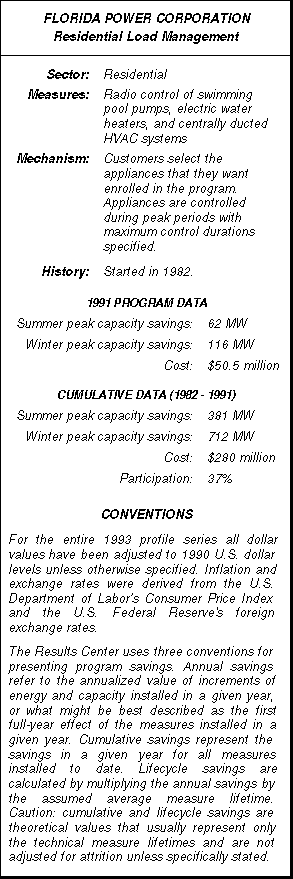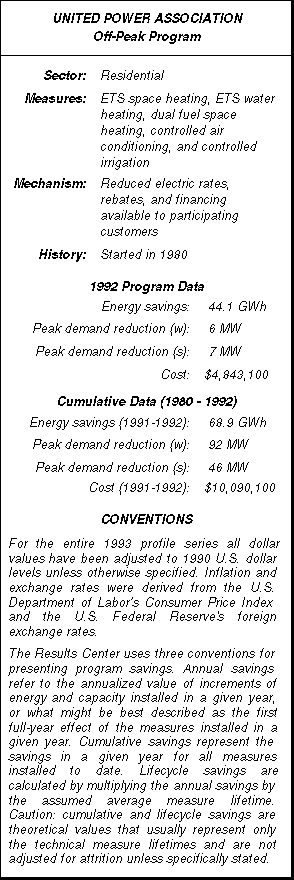EXECUTIVE SUMMARY
 San Diego Gas & Electric’s Commercial Lighting Retrofit program is one of the most unique and successful programs of its kind in the country. Not only is an unusual sales commission arrangement used to stimulate participation in the program, but the program has exceeded its targets for savings for each of the three years that it has been implemented. Analysts at SDG&E believe this success has been a direct result of the sales commissions paid. Lighting representatives are provided a base salary and then are eligible for a two-tiered commission based on their success. Furthermore, dissatisfied customers cost these reps money, as they have to repay twice the value of their commission on the job as a penalty.
San Diego Gas & Electric’s Commercial Lighting Retrofit program is one of the most unique and successful programs of its kind in the country. Not only is an unusual sales commission arrangement used to stimulate participation in the program, but the program has exceeded its targets for savings for each of the three years that it has been implemented. Analysts at SDG&E believe this success has been a direct result of the sales commissions paid. Lighting representatives are provided a base salary and then are eligible for a two-tiered commission based on their success. Furthermore, dissatisfied customers cost these reps money, as they have to repay twice the value of their commission on the job as a penalty.
In terms of program expenditures, the Commercial Lighting Retrofit program is SDG&E’s largest program. In 1992 SDG&E spent approximately 1/3 of its total electric DSM budget on the program. As a result the program captured 44% of all electric DSM energy savings and 33% of all electric DSM capacity savings for the utility for the year.
The program also is unique in terms of the measures for which incentives are available. SDG&E offers commercial customers cash incentives for two, four, and eight foot fluorescent fixtures (which include lamps, ballasts, and optical reflectors) but the program has also convinced many customers to change out all of their interior lighting equipment for more efficient measures at the same time. SDG&E tries to sell the customer on retrofitting the entire lighting system by providing lighting recommendations and economic calculations for all lighting systems, regardless of type. Thus SDG&E tries to avoid having to perform a second retrofit. In a sense, the program incentives for select lighting efficiency measures leverage more comprehensive lighting energy savings, effectively foreclosing the lost opportunity of the retrofits’ potentials. SDG&E will pay incentives for other "custom" measures which are determined to be cost effective and which are based on proven customer savings.
SDG&E conducts a custom bidding process for each job using a pool of precertified contractors who actually perform the retrofits. Through this fixed-price bidding process, SDG&E estimates that lighting retrofit costs are reduced by about 30% for each job. If customers elect to use their own contractors, the job must be initially surveyed by a SDG&E lighting representative, and then the job must meet performance standards before a rebate check is written. Typically the rebate pays for 50% of the total retrofit cost. Because of the different building sizes participating in the program, incentive payments have ranged from $3,000 to $500,000. With the SDG&E incentive, customer payback averages about one year for program measures.
[CLICK HERE TO DOWNLOAD THE ENTIRE 22 PAGE PROFILE IN PDF FILE FORMAT]
This profile was produced by 

 Florida Power Corporation (FPC) is one of the leading utilities in the United States in regard to load management. In fact, approximately 490,000 of the utility’s residential customers participate in FPC’s Residential Load Management program, making it the largest residential load management program in the United States. Given Florida’s reputation for hot weather, it is ironic that FPC is a winter peaking utility, a function of electric resistance space heating. FPC has achieved total winter peak demand savings of over 1,035 MW, with over 700 MW of demand savings resulting from the Residential Load Management program, thanks to the cooperation of its residential customers whose average winter peak demand reduction is calculated to be 1.87 kW per customer.
Florida Power Corporation (FPC) is one of the leading utilities in the United States in regard to load management. In fact, approximately 490,000 of the utility’s residential customers participate in FPC’s Residential Load Management program, making it the largest residential load management program in the United States. Given Florida’s reputation for hot weather, it is ironic that FPC is a winter peaking utility, a function of electric resistance space heating. FPC has achieved total winter peak demand savings of over 1,035 MW, with over 700 MW of demand savings resulting from the Residential Load Management program, thanks to the cooperation of its residential customers whose average winter peak demand reduction is calculated to be 1.87 kW per customer. Portland General Electric (PGE) opened the Energy Resource Center (ERC) in November 1986 with the goal of "turning technology into competitive advantage" for its customers. Approximately 10,000 people have passed through the ERC doors since its opening. The ERC has blossomed into more of a regional center, helping interested commercial & industrial professionals from all over the Northwest. The increased "regionalization" of the ERC is a trend that PGE hopes to aggressively pursue. PGE believes that the ERC has helped the utility become much more directly involved with technology transfer and influencing energy choices. More specifically the ERC has helped PGE better reach its commercial and industrial customers.
Portland General Electric (PGE) opened the Energy Resource Center (ERC) in November 1986 with the goal of "turning technology into competitive advantage" for its customers. Approximately 10,000 people have passed through the ERC doors since its opening. The ERC has blossomed into more of a regional center, helping interested commercial & industrial professionals from all over the Northwest. The increased "regionalization" of the ERC is a trend that PGE hopes to aggressively pursue. PGE believes that the ERC has helped the utility become much more directly involved with technology transfer and influencing energy choices. More specifically the ERC has helped PGE better reach its commercial and industrial customers. United Power Association’s (UPA) off-peak load management program accounts for the large majority of the utility’s DSM expenditures and savings. The off-peak program formally began in 1980, following participation in a Department of Energy electric thermal storage demonstration project. In 1981, a system-wide load control system was put in place covering 95% of UPA’s service territory using a VHF (very high frequency) one-way radio system to control participating loads. By controlling customer loads UPA is able to shift demand to off-peak hours, reducing peak demand.
United Power Association’s (UPA) off-peak load management program accounts for the large majority of the utility’s DSM expenditures and savings. The off-peak program formally began in 1980, following participation in a Department of Energy electric thermal storage demonstration project. In 1981, a system-wide load control system was put in place covering 95% of UPA’s service territory using a VHF (very high frequency) one-way radio system to control participating loads. By controlling customer loads UPA is able to shift demand to off-peak hours, reducing peak demand.